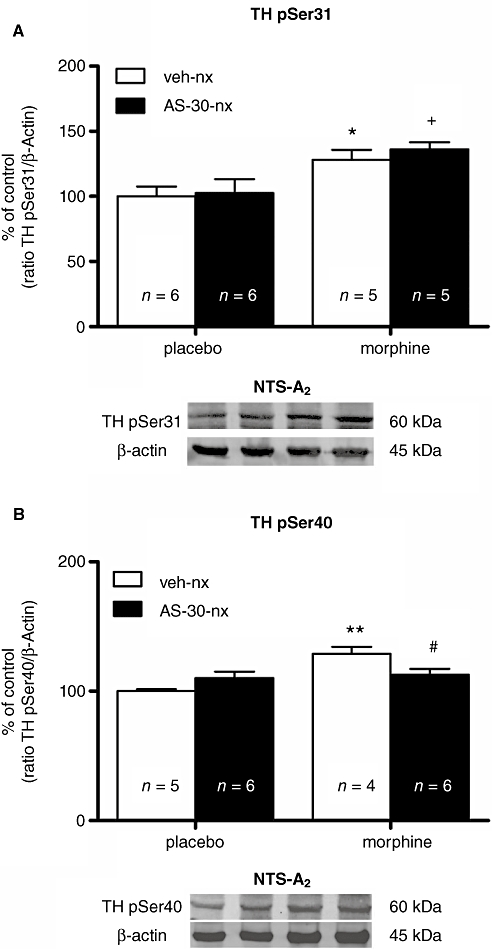Figure 4.

Morphine withdrawal-induced TH phosphorylation at Ser40 is dependent on the activation of CRF2 in the NTS-A2 noradrenergic cell group. Representative immunoblots of TH phosphorylated at Ser31 (A) and Ser40 (B) in NTS tissues isolated from placebo or morphine-dependent rats 30 min after the administration of naloxone in the absence or presence of an i.c.v. infusion of AS-30 (20 µg·2 µL−1) 10 min before naloxone administration. Data correspond to mean ± SEM. In morphine-dependent rats, a post hoc comparison test revealed a significant increase in TH phosphorylation at Ser31 during morphine withdrawal, which was not antagonized by AS-30. By contrast, the increase in TH phosphorylated at Ser40 after naloxone-precipitated morphine withdrawal was attenuated in rats pretreated with AS-30. *P < 0.05; **P < 0.01 versus control pellets (placebo) + saline + naloxone; +P < 0.05 versus control pellets + AS-30 + naloxone; #P < 0.05 morphine-treated rats + saline + naloxone. TH, tyrosine hydroxylase; CRF2, corticotropin-releasing factor type-2 receptor; NTS-A2, nucleus of the solitary tract-A2 noradrenergic cell group; AS-30, antisauvagine-30; veh, vehicle; nx, naloxone.
